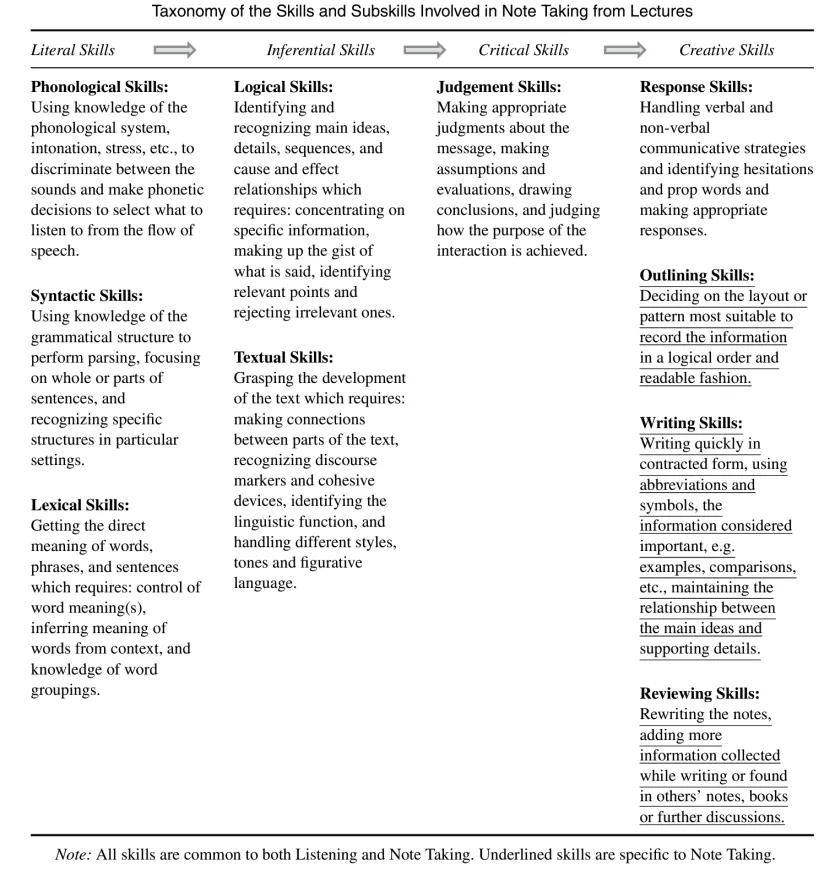[115] 노트 분류에 관한 글
알림
|
페이지 정보
작성일
2024.08.09 06:27
본문
A taxonomy of notes
노트 분류에 관한 글을 소개합니다.
https://nesslabs.com/taxonomy-of-notes
노트 분류에 관한 다양한 의견들이 있습니다.
Andyʼs working notes:
- https://notes.andymatuschak.org/Taxonomy_of_note_types
- “ephemeral scratchings (임시적 스크래칭)”, “prompts and incomplete notes (프롬프트 및 미완료 노트)”, evergreen notes.
Matt Brockwell의 evergreen 🌲 notes 4단계 구분:
Alex Chamessian 목적 (aims), 종류 (types), and 참조 (sources of notes)에 기반한 구분:
Professor Alaa M. Al-Musalli:
- Taxonomy of Lecture Note-Taking Skills and Subskills
- https://www.tandfonline.com/doi/full/10.1080/10904018.2015.1011643
이 모든 접근 방식을 포함하는 노트 구분은 없다는게 저자의 생각이며, 다음 다이어그램은 저자의 노트 분류입니다.
노트 분류의 다양한 방법:
- Medium. Where the note is recorded. This could be digital (on a phone, tablet, laptop) or analog (post-it note, notebook, index card, etc).
- Goal. Why the note is recorded. Notes can be taken with a variety of aims, such as productivity, memory, creativity, collaboration.
- Temporality. When and for how long the note is recorded. Notes can go from quick and ephemeral (“fleeting note”) to living archives you keep on adding to (“evergreen note”).
- Format. How the note is recorded. The note could be written (bullet points, excerpts), audio (voice note), or visual (screenshots, doodles, graphs).
- Method. There is a bit of overlapping with the format, but this looks at the specific method used for taking the note, such as the Cornell method, mind mapping, or Zettelkasten.
- Structure. How the note is arranged. Logs, lists, and excerpts are lower-effort, whereas outlines and summaries are more involved. Again, some overlap with format.
- Source. Was the note generated from a book, a research paper, a newspaper article, a tweet, a podcast, a conversation?
here is my visual with key terms used for my Zettelkasten:
A surprising insight:
- "Permanent Notes" are networked, but have no hierarchies.
- Many "Structures" are necessary to work without hierarchies.
https://forum.zettelkasten.de/discussion/1019/a-taxonomy-of-notes
댓글 0








